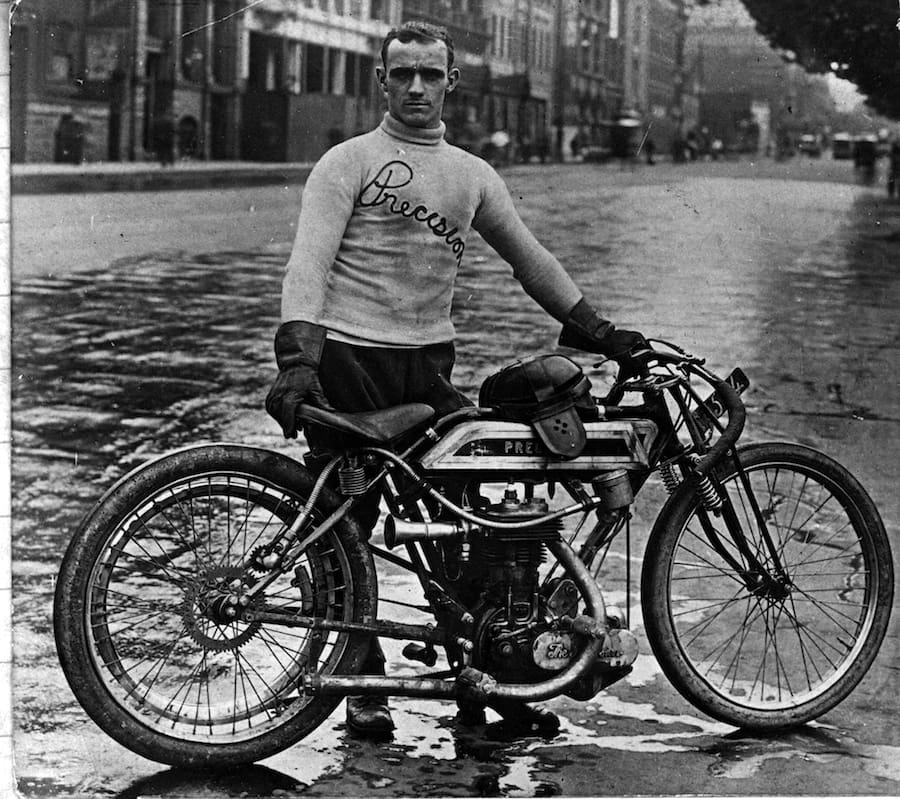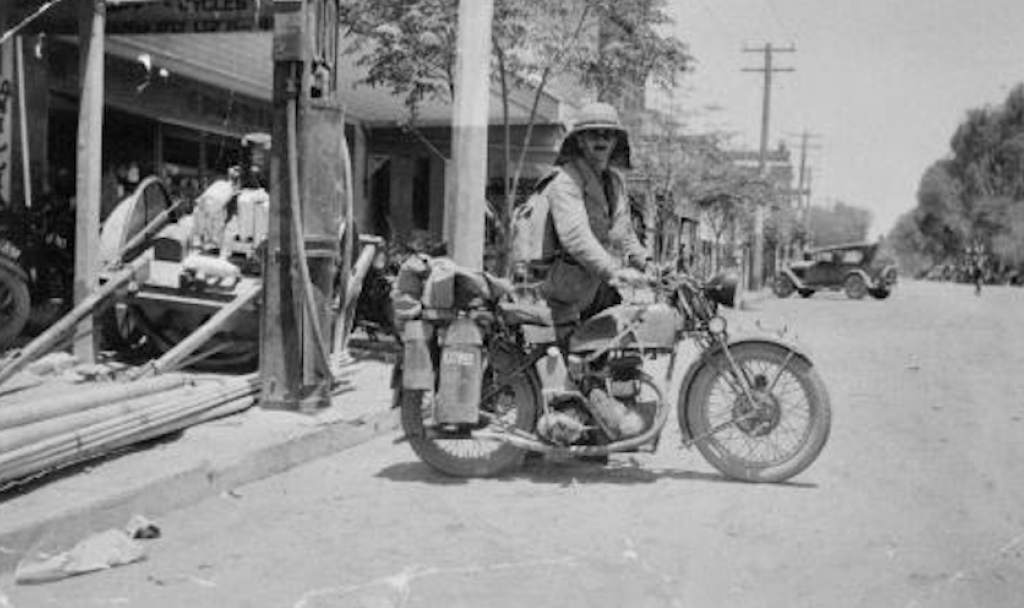It was early spring 1920 when, in an outstanding feat of endurance, Harold ‘Ranji’ Parsons rode precisely 1114.5 miles in 24 hours. And this over a rough gravel 23-mile course that included such notable sections as the gradients of Garden Hill and a whoopdedoo named The Big Dipper. It also entailed negotiating the notorious hairpin bend overlooked by the Turf Hotel, which had obtained a 24-hour licence for the occasion, and in which, no doubt, many other records were broken.
But perhaps the most daunting obstacle was a three-foot-high elevated railway line crossing on the Maffra-Sale Road. Ranji treated this with disdain, managing one jump at 39 feet. At least that’s where the front wheel landed, the rear following 10 feet six inches later. We now know that’s not the ideal way to do it. Imagine landing in ball bearings on a rock hard Dunlop ‘Railroad’ tyre (yep, that’s what Dunlop named them). All with the following quarter tonne of industrial steel attempting to bury you head first into the hardpack. And repeating this every half hour for a full day. Ranji’s 600cc Indian Scout also took time to reach its top speed of 70mph which, considering a total riding time of little more than 22 hours, makes Ranji’s effort even more exceptional.
After an attempt only a week earlier was aborted due to heavy overnight fog, Ranji commenced the second attempt at 7am on Friday 27 August 1920 and shot past the Turf Hotel 48 times at an average lap time of 26 minutes during daylight hours, and 28 minutes in darkness – his rhythm being far more reliable than the contemporary lighting available. A day later Ranji had set new world speed records for every distance up to 24 hours. In doing so he broke the 24-hour record of American legend Cannonball Baker by 87 miles.

During the night stints, changing batteries took less time than refuelling but allowed Ranji to partake of the recognised nutritional supplements of the day – a cup of tea and a slice of toast. Around tea time Ranji scoffed a proper feed of steak and eggs followed by plum pudding and custard; which may have been a little unsettling when he hit the Railway Hump and swooped through The Big Dipper in the fog.
Jim Scoones was only a very young lad at the time and a passenger in his father’s straight eight Buick, following Ranji on the final lap of his successful world record ride. The Buick was carrying the official timekeepers, who had stopped to mark the roadway at the point Ranji had reached when the clocks hit 24 hours. After that they chased him down. This was not an easy task as Ranji had ridden the final 10 and a half miles in 11 minutes and kept on at the same pace. Eventually the officials waved for him to stop and Ranji dismounted for the final time. It was then that Jim – who later became a reporter – recalls Ranji demonstrating his relief that the long ordeal was over. “Ranji took the longest piss I’d ever witnessed.”
Born in 1891 in Richmond Victoria, at 23 years old Harold ‘Ranji’ Parsons was Australia’s undisputed motorcycling champion, the world records he set in 1920 testament to his stamina and speed. Tragically, while testing a new Indian ‘Power Plus’ motor only a few months later, Ranji hit a horse and subsequently died in Royal Melbourne Hospital. The Motorcycle News reported that more than 1000 motorcyclists attended Ranji’s funeral. And in 1923 the Victoria Motor Cycle Club erected a monument to Ranji at Yarra Park State School which is believed to be the first monument dedicated to a motorcyclist anywhere in the world. The monument was later moved to Wellington Parade where it stands to this day.
Thanks to Ian Kennedy Life Member of Maffra-Sale Motor Cycle Club and founder of the Harold Parsons Reliability Run for his historical notes.
WORDS PETER WHITAKER












